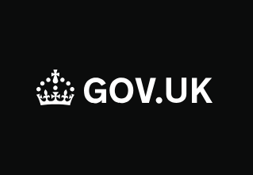

Light Dynamix, a leader in cutting edge drone technology, manufacturing and innovative light show solutions, is thrilled to announce an exclusive licensing agreement with US based Illuminate Drones. This landmark partnership grants Illuminate Drones the exclusive rights to produce and market Light Dynamix’s revolutionary Pixel light show drone across the United States. With Illuminate Drones’ expertise and reach, the Pixel drone is set to dazzle audiences across the US, delivering immersive and unforgettable aerial light displays.

This collaboration is a key milestone in Light Dynamix’s rapid expansion and cements its position as a global innovator in the drone technology and entertainment industries.
Illuminate Drones, a longtime leader in the indoor drone light show space and drone swarm manufacturing, is thrilled to open this partnership with Light Dynamix and bring a top-tier outdoor drone light show system to their growing indoor drone light show solutions.
This partnership comes at a time of unprecedented growth for Light Dynamix, who continue to innovate and expand its portfolio. As Light Dynamix continue to expand, they’re opening the door to select partnerships across the globe for those who share their vision of creating and distributing state of the art drone technology.
If you’re interested in being part of the future of aerial drone light shows, contact Light Dynamix at [email protected]
For more information about Light Dynamix and its Pixel drones, visit www.lightdynamix.co.uk
For more information about Illuminate Drones, visit www.illuminatedrones.com

Light Dynamix is an ARPAS-UK Member.
For more Member Success Stories & Blogs
14 February 2025
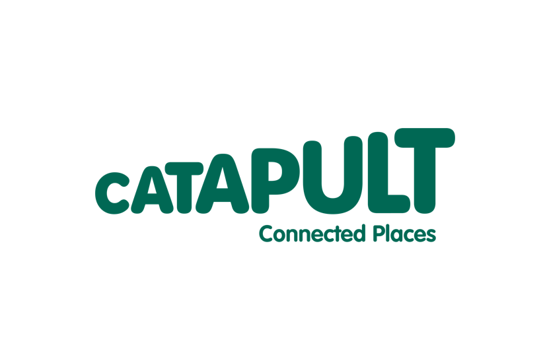
The United Kingdom’s commercial drone industry, valued at £501 million in 2023, stands at a pivotal juncture. In this paper by Connected Places Catapult “Beyond Sight Behind Barriers”, the authors examine the current state of the UK Drone Industry and what might be holding it back from the next steps of growth. Despite its rapid growth and the nation’s rich aviation heritage, the sector faces significant challenges due to regulatory uncertainties, particularly concerning Beyond Visual Line of Sight (BVLOS) operations. This ambiguity deters investment and hampers the integration of drones into the existing airspace framework. To harness the full economic potential and position the UK as a global leader in drone technology, immediate and decisive action is imperative. Establishing a dedicated task force with clear accountability, government representation, and targeted funding is essential to revitalize momentum and address existing regulatory gaps. Without such measures, the UK risks forfeiting substantial economic opportunities and ceding its competitive edge in the burgeoning global drone market.
This paper explores how the UK’s drone market design and regulation approach is missing key pieces of the puzzle: the current approach relies on many actors attempting to piece together the jigsaw without being able to visualise the final image displayed on the box. New leadership is desperately needed to reset the approach and configure a successful market, which the regulations can then support.
The paper measures the UK Drone Industry against other economic areas employing drones, examines drone traffic management technologies and focuses on the Skyway Case Study, before making concluding recommendations.
Recommendations:
Read further Drone Industry Reports
17 February 2025
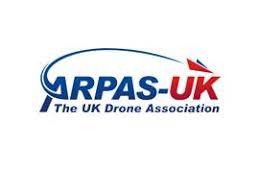
12 February 2025 – ARPAS-UK is a trade body and our #1 mission is to support our members’ business and their business growth. Our objective is to accelerate the safe and professional adoption of drones across all industries, unlocking its transformative impact for the economy and wider society. This includes projecting a positive mindset about our own confidence in our success as an industry. It is also about supporting a positive public perception of our community.
Our approach to the Regulator is therefore to support them by representing the views of our members to ensure the most pragmatic regulation is put in place in a timely manner. We see little benefit in criticising the Regulator publicly – if there are legitimate criticisms we believe we will achieve better results for our members by lobbying strongly behind the scenes, providing responses to Consultations and using our position as a well-respected industry body.
In our exchanges with the CAA, our target is proportionate regulations, and the ability to do more, safely, at a reasonable compliance cost. For example, in our response to the service charge consultation, our main points were focused on the outcome for operators (fees multiplied) rather than pointing out mistakes made. That consultation response was the output of multiple iterations with members over several weeks, and we’re confident that these are the comments and priorities expressed by our members.
In December 2024, ARPAS-UK’s Regulation Special Interest Group (REG SIG) shared its Position Paper #2 with its members and with the CAA. This 20-page document outlines our regulatory advocacy priorities. The absolute priorities were:
The complete and exact table of content of the 20 page ARPAS-UK REG SIG Position Paper #2, shared with our members and the CAA, reads as follows:
1. Consultation on Scheme of Charges due Jan 6: some charges possibly at x2 x3 or even more. Proportionate, fair, and reasonable?
2. Open category: what’s next at the end of the transition period Jan 2026?
3. VLOS maximum range, 500m specified in the Specific category but not in the Open category
4. Existing PDRA01 – UK SORA – no impact – no regulatory setback.
5. New PDRAs for lower risk operations, starting with Reduced distances from uninvolved people with low-mass low-speed low-height data capture drone ops and BVLOS with Visual Observers
6. PDRA01 Audit, return of experience
7. UK SORA – Absence of reference to generic location authorisation. Would be an unjustified profound set-back vs current OSC/ORA annual authorisations.
8. Transition to SORA for the OSC/ORA holders: Avoiding overcomplexity. Learning the lessons from Europe. Transition period. Grandfather’s rights. Briefing. Training.
9. Operations Manual for OSC renewals / anticipating SORA application / opportunity for clearer leaner Ops Manual
10. Atypical Air Environment Clarifications. Zoom on Electronic Conspicuity.
Appendix:
11. Why transitioning UK PDRA01 to poor performer EU STS01 with controlled ground areas would be a mistake.
12. Updated RAG on Regulatory Matters identified in May 2024 report.
In our exchanges with the CAA, we provide as many facts and evidence as possible, sourced from our members, from stakeholders, and from other international organisations like us, so that we can help shape proportionate regulations.
As the UK’s trade association for the drone industry, ARPAS-UK strongly supports regulation that is both appropriate and proportionate. We believe that relevant and accessible authorisations will encourage operators to remain within the regulatory framework, promoting industry growth and maintaining high safety standards.
By continuing to engage with the CAA and advocating for sensible regulatory solutions, ARPAS-UK aims to ensure that the UK drone industry thrives under a system that balances safety with operational practicality.
ARPAS-UK fosters a collaborative environment that promotes growth and innovation within the drone industry. As part of our organisational objective, we work to build opportunities across diverse industries, including demonstrating use cases and actively engaging with Local Government to support the integration of drone technologies in meaningful ways. We are committed to advancing STEM education for the future, including inspiring the next generation about the potential of drone technology and industry stakeholders. With drones firmly on the national agenda, we encourage organisations and individuals to join ARPAS-UK and be part of shaping the future of this dynamic industry.
*** end ***

ARPAS-UK is sharing this information to its members. The survey is primarily targeting EASA-land UAS operators, but UK operators can contribute, especially as the UK will adopt its version of UKSORA. The objective it to collect evidence on the volume of flying hours and the level of incidents, to inform proportionate regulatory decision and SORA implementation.
This initiative follows a similar survey by the Dutch Drone Council (DCRO) and aims to provide evidence-based input for refining UAS regulations (see below, link to very instructive Dutch study).
The survey is open to UAS operators operating under IR (EU) 2019/947 in both the open and specific categories. The collected data will help assess the relationship between flight hours and incident rates, contributing to a better understanding of operational risks.
Participants are requested to report each Operational Approval or Risk Category separately and submit only commercial flight data to ensure statistical accuracy. The anonymised results will be shared with EASA and presented at events such as the European Drone Forum, where findings could help towards future regulatory adjustments. Participants will also receive a summary of the compiled results.
For more details on the survey, visit: UAV DACH UAS Operator Survey or see below.
The Dutch Association of Certified RPAS Operators (DCRO) conducted a study analysing 1.4 million flight hours, with the resulting data suggesting 1 in 100,000 flight hours for leaving the area and 1 in 1,000,000 flight hours for flyaways.
Key findings highlighted that professional UAS operators, who adhere to strict safety protocols, experience significantly lower risk levels than previously estimated. As a result, some SORA containment measures – such as Flight Termination Systems (FTS) – may introduce additional risks rather than mitigate them. DCRO recommended the standardisation of UAS safety data collection across Europe and revisions to containment regulations to align with real-world risk assessments.
For more information, please refer to our article on the DCRO White Paper findings here
12 February 2025
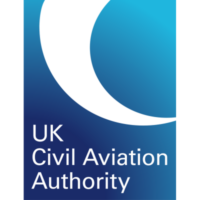
The Airspace Modernisation Strategy Support Fund (ASF) is a financial initiative by the UK Civil Aviation Authority (CAA) designed to assist UK aviation industry stakeholders in advancing the nation’s airspace modernization efforts. Building upon the previous Future Airspace Strategy Facilitation Fund, the ASF aims to support projects that benefit multiple stakeholders or conduct research facilitating broader industry implementation.
Funding Allocation and Application Process:
The CAA administers the fund through a grant process, with bi-annual calls for project proposals. Funding proposals must align with the overall objectives of the Airspace Modernisation Strategy. Applicants are responsible for engaging with relevant industry stakeholders and presenting an evidence-based business case to the ASF Advisory Board. The Advisory Board reviews and provides feedback before submission to the ASF Decision Board, which includes members from the AMS Assurance Group and airline representatives.
Benefits of Applying:
By participating in the ASF, organizations can contribute to the UK’s airspace modernization, leading to enhanced safety, efficiency, and environmental sustainability in aviation operations.
Deadline for applications: 10 March 2025
View more Funding, Bids & Opportunities
10 February 2025
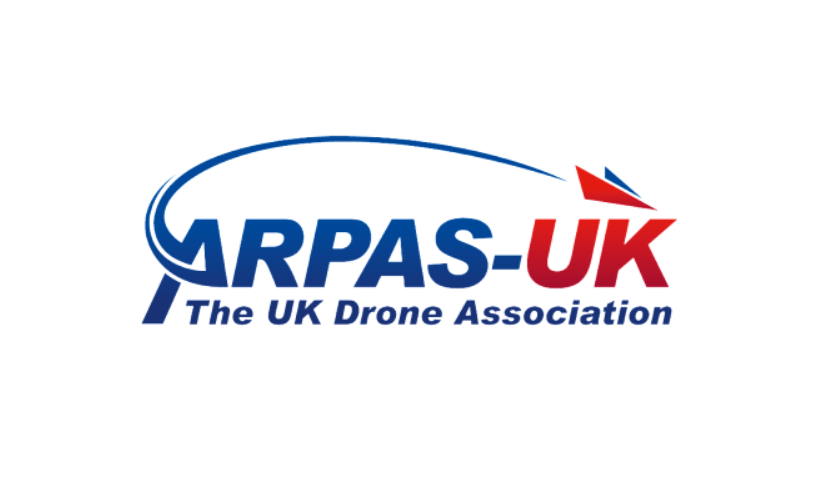
Disclaimer: All jobs posted here are from LinkedIn and other job sites including member and non-member organizations. Drone related jobs.

Skyports Infrastructure is looking for a Remote Pilot

Infinite Services by Skyfarer are looking to recruit flexible Remote Pilots with a GVC.
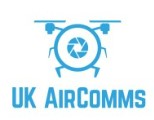
UK AirComms is looking for a Telcoms Drone Pilot
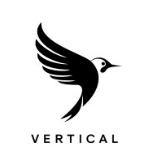
Vertical Aerospace is looking for a Test Operations Lead.
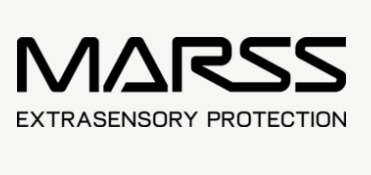
MARSS is looking to recruit a UAS Engineer & a Software Engineer: Autonomous Systems.

NATS are looking to recruit a Head of Safety, Regulatory & Policy.

Dronamics are recruiting a Senior Aerospace Manufacturing Engineer.

Certo Aerospace are looking to recruit a Graduate Aerospace Design Engineer.
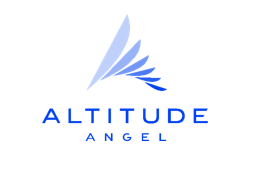
Altitude Angel are looking to recruit a Technical Product Delivery Manager.

Plowman Craven are looking to recruit a UAV Lead.

Windworkx are looking to recruit a UK Onshore Drone Pilot
11 February 2025

Watch ARPAS-UK Director Aleks Kowalski’s video message to the 62,625 UK students who took part in January’s VotesForSchools’ poll.
Young people from across the UK participated in VotesForSchools’ nationwide discussion on the topic: “Should we be more worried about drones?”. VotesForSchools contacted ARPAS-UK and invited us to respond to the results.
An incredible 62,625 students participated in the poll, from primary school age through to college, sharing their perspectives, sparking discussions on privacy, regulation, and the role of drones in society.
To acknowledge this fantastic level of engagement, ARPAS-UK Director Aleks Kowalski recorded a special message to thank all the students who took part. In his response, he highlighted the exciting opportunities within the drone industry, encouraging the next generation to explore potential careers in this fascinating and ever-evolving field.
Primary 5-7 (13,857 students) considered:
“Do you know how to respect someone’s privacy?”
90% said YES
Primary 7-11, Secondary & College (46,768 students) explored:
“Should we be more worried about drone use?”
56% of 7-11-year-olds voted YES, highlighting a concern about how drones fit into our daily lives.
61% of secondary students and 55% of college & 16+ students voted NO, suggesting that many young people see drones as a tool with positive potential when used responsibly.
Find Out More @ VotesForSchools
Subscribe to our YouTube Channel!
10 February 2025

See below the letter sent on 7 February 2025 to all PDRA01 holders on SORA Transition. OSC holders received a very similar letter. In short:
PDRA-01 OAs are not affected by the introduction of UK SORA. No expected changes before 31 March 2026.
Read more Regulation related news on our Regulatory Matters – News Repository
10 February 2025